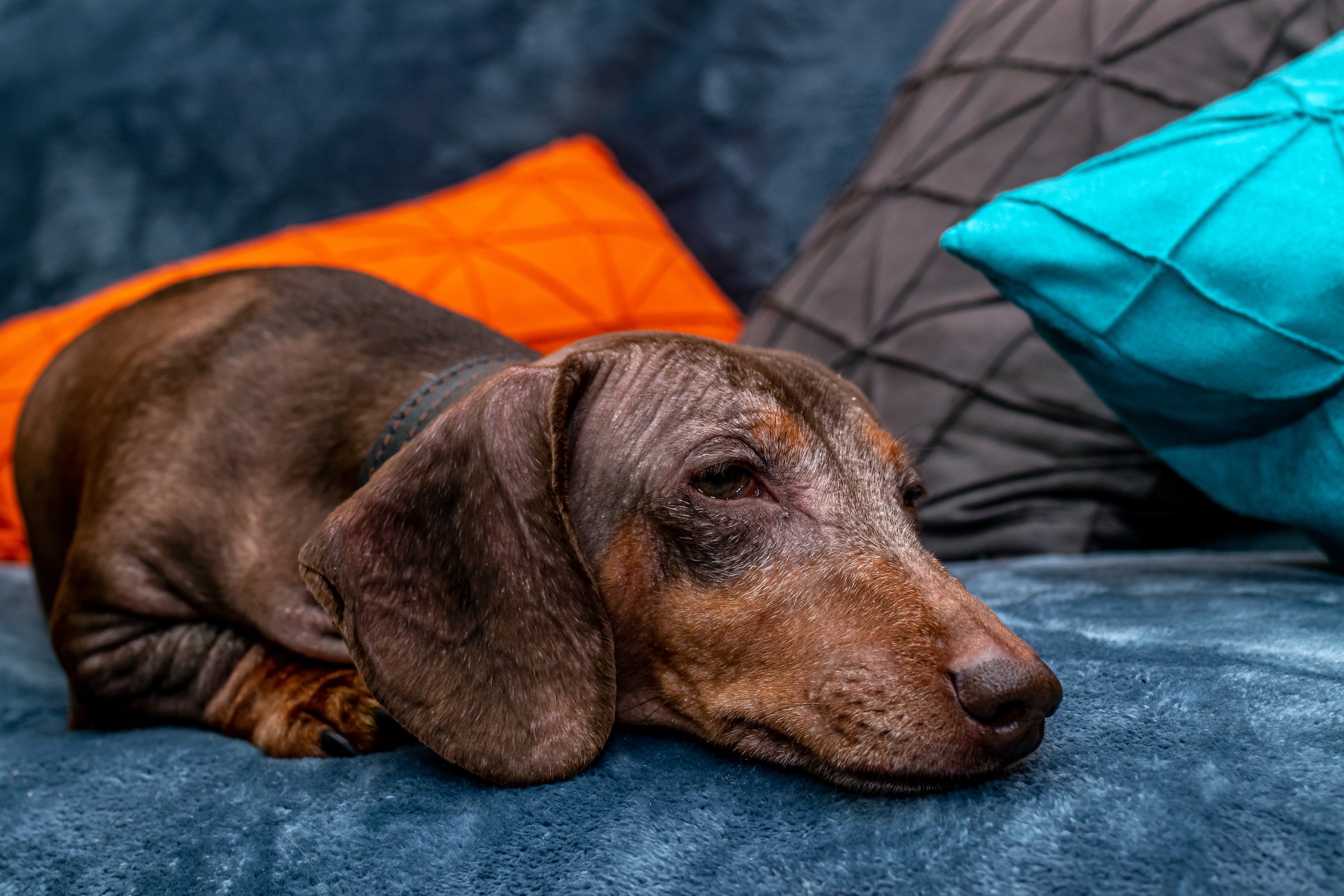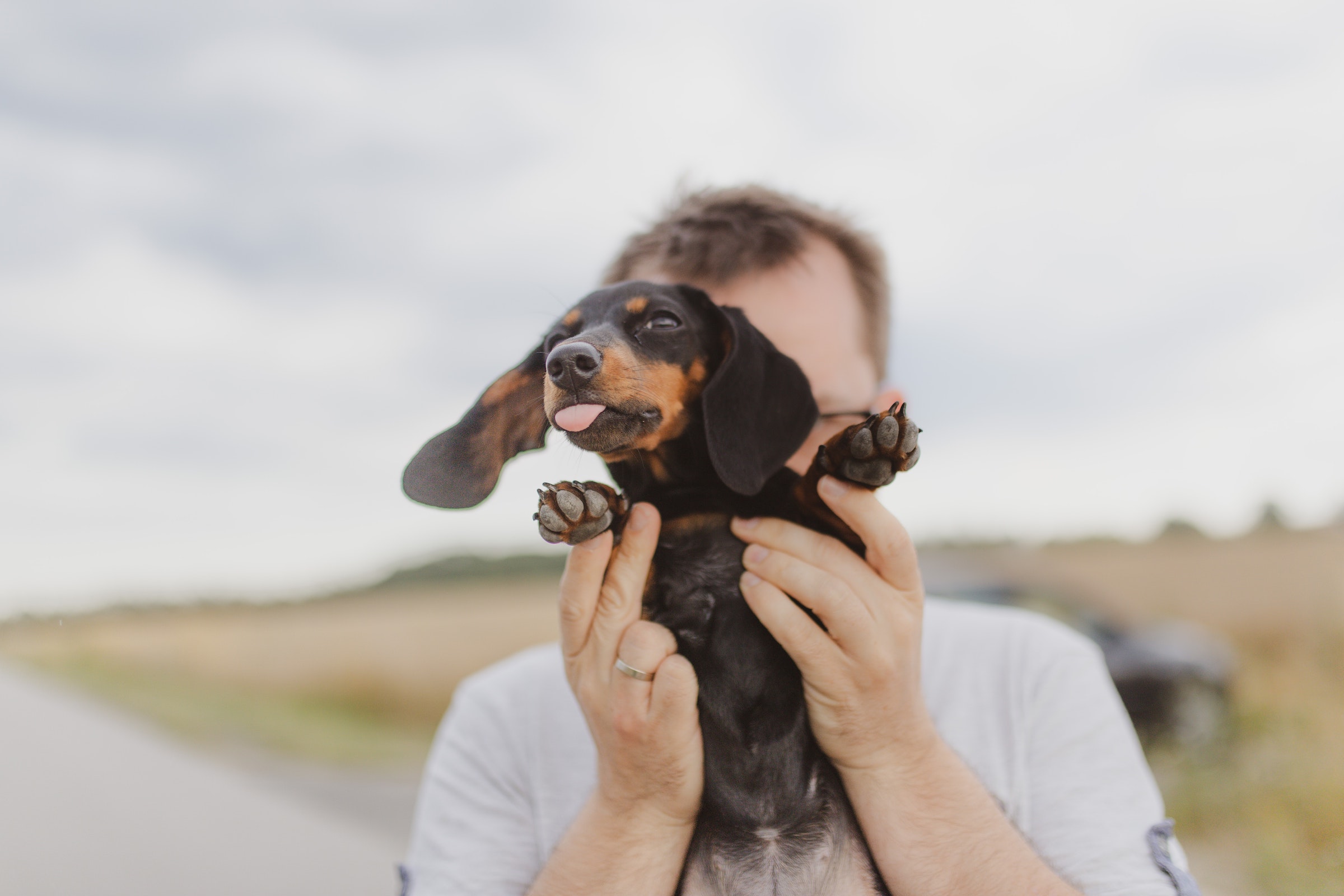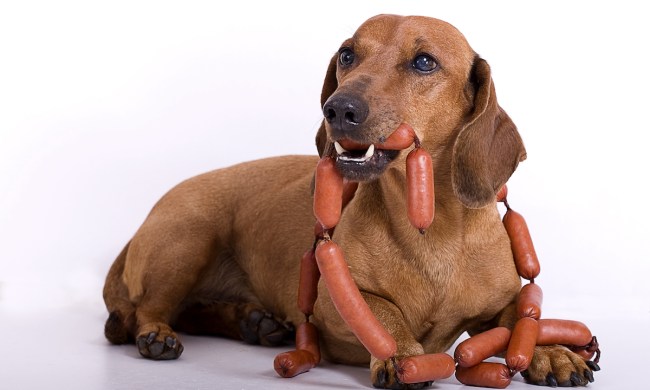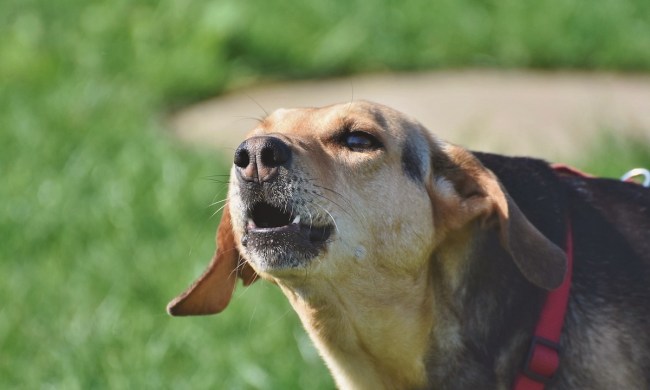Snuggling with your pup in bed or on the couch is one of the high points of pet parenthood (as long as they don’t leave a trail of slobber and fur wherever they go!). For owners of small lapdogs like doxies, it’s especially easy to let your fur baby hop on the chair with you — but should you let your dachshund jump on furniture?
A doxie’s short legs and long body make getting around a bit tricky. While many figure out how to hop on and off furniture with as much ease as they can muster, it can have some long-term consequences that might make you think twice about where you let them jump. Luckily, dachshund training is just one great way to keep your pup’s paws on the ground. Just don’t forget the treats!
Why you shouldn’t let your doxie jump on the furniture
As cute as it looks to see your little lowrider hopping up and down from her favorite chair, she may do more harm than good to her body when she does. When a dog jumps, they put extra pressure on their spinal column, which can create or exacerbate back problems. The same happens to people over time, so you can imagine the kind of distress your pup may be in after years of spinal wear and tear.
Of course, there’s also a risk of falling — though any dog can be susceptible to this misfortune. Pups with supershort legs, like dachshunds, may be even less graceful due to their somewhat limited mobility. A ramp or set of stairs for your four-legged friend is a great alternative that provides your dog the independence to get up and down as she pleases. Otherwise, she’ll have to wait for you to lift her every single time.
Even if your doxie hasn’t developed back problems, she’ll benefit from using stairs as early as possible. It’s possible that reducing spinal pressure will, over time, prevent or reduce the severity of any back problems that do occur (via Prestige Animal Hospital).
Although it’s a smart idea to assist any smaller, older, or handicapped dogs instead of letting them jump, you should be especially cautious with your dachshund due to the breed’s unfortunate genetic issues. One small fall can rupture a disk and trigger a lifelong spinal disease (via Purina).

Dachshund spinal and disk diseases
After generations of breeding for shorter and shorter legs, the dachshund is left with a tragic predisposition for spinal column issues. Intervertebral disk disease (IVDD), according to Purina, affects anywhere from 19% to 24% of doxies at some point during their lifetimes. With this debilitating condition, the fluid that cushions the vertebrae wears down or ruptures, leading to increased pressure on the spinal cord.
This tends to be a recurring issue and can lead to severe consequences like paralysis and pain. Fortunately, there are many medications and therapies that can make IVDD a livable condition, though it’s far easier and less painful to reduce your dog’s risk in the first place.
IVDD can appear or reappear due to a number of factors. Injuries — even minor ones — can put enough pressure on the spine to cause a flare-up. Due to their breeding, many doxies are also predisposed to early aging and degeneration of the spinal column, which can cause pain and other complications in itself (via Universities Federation for Animal Welfare).
Are all doxies at risk for spine injuries?
While there’s no guaranteed way to tell which dachshunds are at risk for developing IVDD, a few observable factors are known to make a difference. Obesity plays a huge role in back problems for doxies, whether or not it’s officially IVDD. Being overweight decreases their mobility, puts pressure on all their joints (which increases arthritis risk), and increases the risk of metabolic or heart diseases (via Prestige Animal Hospital).
Puppies and young dogs have spinal columns that are still growing, so any injuries during this significant time could become a lifelong issue. Similarly, older dogs may have spinal columns that have already begun to degenerate, putting them at higher risk for further damage.

What you can do
If you notice your dachshund is walking or acting strangely, contact your trusted veterinarian. IVDD and other back problems can show themselves slowly, immediately, or anywhere in between, so it’s possible to catch them before they become a severe issue.
Through anti-inflammatory medications, therapies, and lots of love, you can give your doxie a long, pain-free life. Your vet will recommend the best treatments for your beloved pup, which will probably include keeping your dog off the furniture. At least, stop her from jumping through strict, repetitive (yet positive!) training. It won’t happen overnight, but it’ll be so worth it to keep your pup safe and happy.
Although intervertebral disk disease can be disabling for dachshunds, it doesn’t have to be a part of your pup’s life. By taking the proper precautions, you can make sure your lowrider won’t strain her back any more than she needs to, which will be good news for you both. No one wants to see their fur baby in pain, after all.



